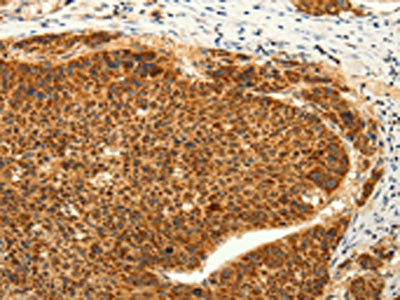TRPC6 antibody [N1N3]
GTX113858
ApplicationsWestern Blot, ImmunoHistoChemistry, ImmunoHistoChemistry Paraffin
Product group Antibodies
TargetTRPC6
Overview
- SupplierGeneTex
- Product NameTRPC6 antibody [N1N3]
- Delivery Days Customer9
- Application Supplier NoteWB: 1:500-1:3000. IHC-P: 1:100-1:1000. *Optimal dilutions/concentrations should be determined by the researcher.Not tested in other applications.
- ApplicationsWestern Blot, ImmunoHistoChemistry, ImmunoHistoChemistry Paraffin
- CertificationResearch Use Only
- ClonalityPolyclonal
- Concentration0.84 mg/ml
- ConjugateUnconjugated
- Gene ID7225
- Target nameTRPC6
- Target descriptiontransient receptor potential cation channel subfamily C member 6
- Target synonymsFSGS2, TRP6, short transient receptor potential channel 6, TRP-6, focal segmental glomerulosclerosis 2, transient receptor protein 6
- HostRabbit
- IsotypeIgG
- Protein IDQ9Y210
- Protein NameShort transient receptor potential channel 6
- Scientific DescriptionThe protein encoded by this gene forms a receptor-activated calcium channel in the cell membrane. The channel is activated by diacylglycerol and is thought to be under the control of a phosphatidylinositol second messenger system. Activation of this channel occurs independently of protein kinase C and is not triggered by low levels of intracellular calcium. Defects in this gene are a cause of focal segmental glomerulosclerosis 2 (FSGS2). [provided by RefSeq]
- Storage Instruction-20°C or -80°C,2°C to 8°C
- UNSPSC12352203
References
- Pdx-1 activates islet alpha- and beta-cell proliferation via a mechanism regulated by transient receptor potential cation channels 3 and 6 and extracellular signal-regulated kinases 1 and 2. Hayes HL et al., 2013 Oct, Mol Cell BiolRead more





